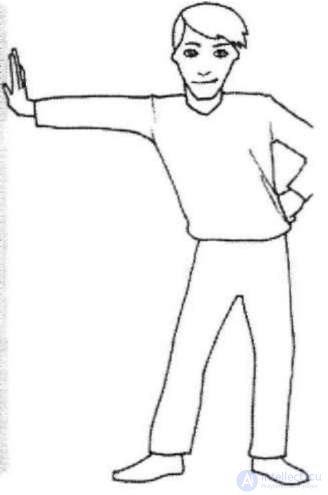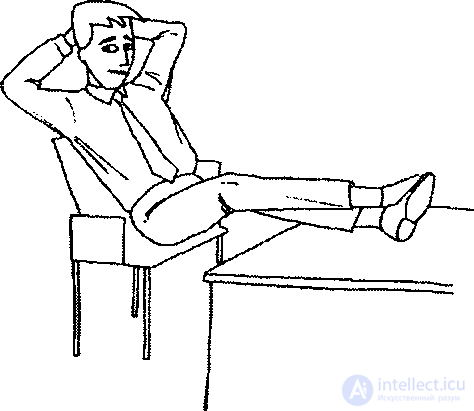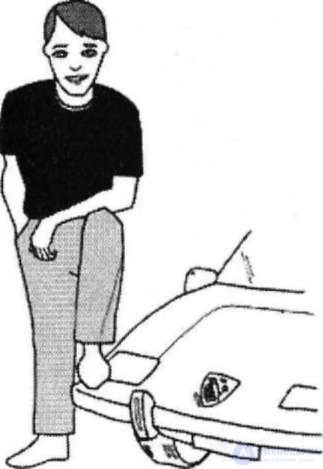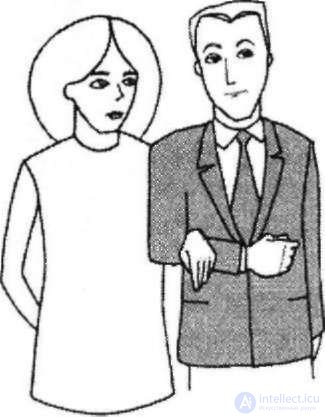
We physically affirm ownership of what we consider ours. We lean towards people or objects to demonstrate our territorial claims to them. Leaning can also be used as a means of domination or intimidation, if that person or object belongs to someone else. For example, if you are going to take a picture with a friend against the background of his new car or yacht, he will most likely be inclined to his purchase, put a foot on him or put his hand. Touching on property, we make it an extension of our own body and show everyone around that this object or person belongs to us. Lovers often embrace in public, thereby immediately claiming their rights to each other. People sometimes put their feet on the table or lean against the doors of their offices to confirm their right to the office itself and everything that is there. The woman brushes away an imaginary fluff from her husband’s shoulder, thereby showing all other women that this man is already taken.
People confirm property rights by physically connecting with the object or person. It is very easy to intimidate the interlocutor by bending over or using an object belonging to him without permission. In addition to the obvious invasion of foreign territory, there are many smaller methods that have a similar effect. You can, for example, lean against the door frame of someone else's office or sit in someone else's chair.
A salesman coming to someone else’s house must ask: “Where are you sitting?” In order not to accidentally occupy the owner’s favorite chair and thereby not disrupt the upcoming deal.

Victoria Beckham confirms her rights to David, putting his hand on his chest 
Lover to lean on someone else's door 
Michael Jackson wanted to symbolically reduce the distance between the child and his fans, so that they could at least temporarily feel "owners". He simply underestimated the distance between the child and the ground. Some people love to lean against the doorposts. They go through life, intimidating everyone around from the first meeting. It makes sense for such people to learn to stand up straight, with their palms open. Only then can they make a favorable impression on others. We, as a rule, make an impression about a person in the first four minutes of the meeting, and no second chance is given to make the first impression.
If the boss is sitting in a chair without armrests (this happens very rarely, since chairs without armrests are usually offered to visitors), he can put one or both legs on the table. When a person in a higher position enters the office, such a clear gesture of ownership disappears, giving way to more subtle options. The owner of the office can put his foot on the bottom drawer, and if there are no drawers, then just put your foot on the leg of the table to confirm the right of ownership.

Approval of table ownership 






Comments
To leave a comment
Body language
Terms: Body language